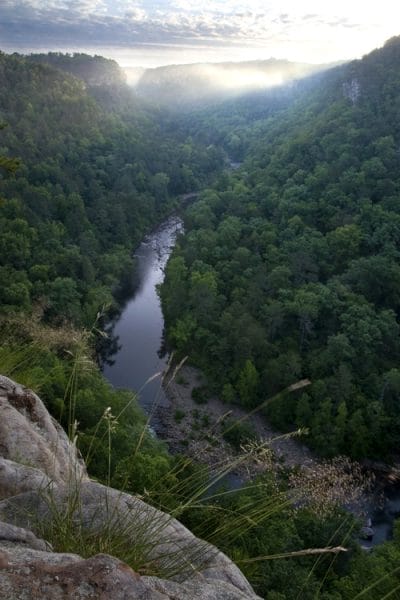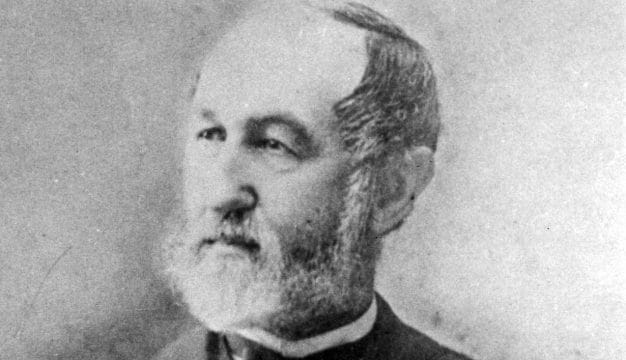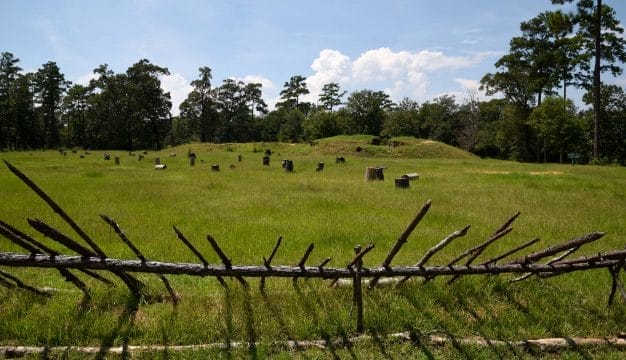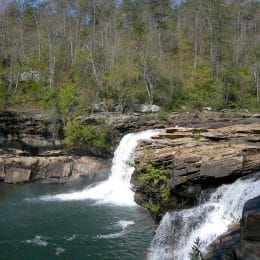Little River Canyon National Preserve
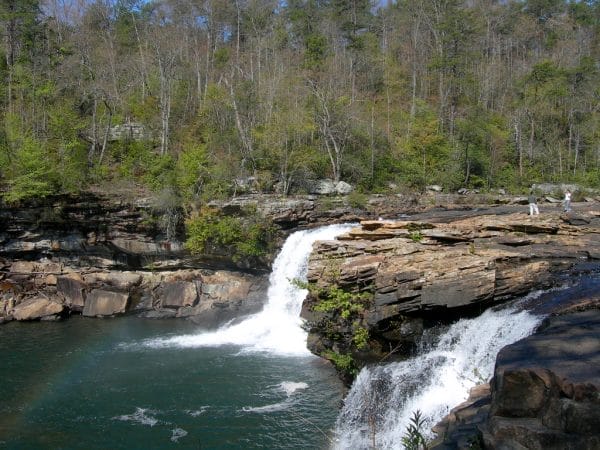 Little River Falls
The Little River Canyon National Preserve is located in Cherokee County at the southern end of the Cumberland Plateau physiographic section. The area’s focal point is the Little River, which flows along Lookout Mountain and is an outdoor recreation destination. The preserve covers about 14,000 acres and follows the canyon from DeSoto State Park in the north to the Canyon Mouth unit of the park in the south. Endowed with much of the majesty of the high Appalachians further north, Little River Canyon in recent years, however, has seen its eastern border marked by development.
Little River Falls
The Little River Canyon National Preserve is located in Cherokee County at the southern end of the Cumberland Plateau physiographic section. The area’s focal point is the Little River, which flows along Lookout Mountain and is an outdoor recreation destination. The preserve covers about 14,000 acres and follows the canyon from DeSoto State Park in the north to the Canyon Mouth unit of the park in the south. Endowed with much of the majesty of the high Appalachians further north, Little River Canyon in recent years, however, has seen its eastern border marked by development.
The Little River Canyon—an area previously known as May’s Gulf—stretches 18 miles and plunges to about 600 feet at its deepest points. Small waterfalls, sandstone bluffs, hiking trails, creeks, and streams draw visitors to the area, and the river offers expert-level rapids for whitewater kayakers and canoers. About 8,000 acres of the preserve north of the canyon are known as “backcountry” and encompass a federal Wildlife Management Area open to hunters. DeSoto State Park covers roughly 5,000 acres, and its facilities include a lodge, tennis courts, a nature center, and cabins built by the Civilian Conservation Corps in the 1930s. At that time, the park was known as State Park No. 5. Canyon Mouth Park and encompassed only 167 acres. This original acreage was donated by the Cherokee County Commission in 1995 after years of struggling to maintain the grounds. The remaining area, totaling nearly 9,000 acres, was purchased from the Alabama Power Company.
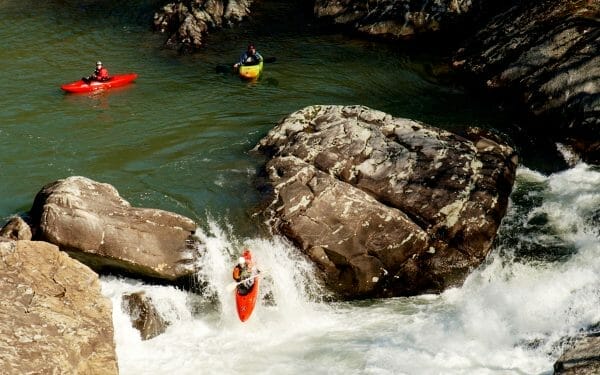 Kayakers in Little River Canyon
The Little River Canyon National Preserve was created in 1992 by an act of the U.S. Congress and was dedicated as a unit of the National Park Service. Initially, the U.S. Congress included an additional 14,500 acres of privately held land surrounding the preserve to serve as a secondary resource boundary from unsightly future development, a condition that was removed from the amended bill that passed. Legislation also stipulated that the backcountry area would continue to provide fishing, hunting, and trapping opportunities as it had in the past, as determined by the U.S. Department of the Interior. The legislation also established the boundaries of the preserve as permanent but subject to congressional changes.
Kayakers in Little River Canyon
The Little River Canyon National Preserve was created in 1992 by an act of the U.S. Congress and was dedicated as a unit of the National Park Service. Initially, the U.S. Congress included an additional 14,500 acres of privately held land surrounding the preserve to serve as a secondary resource boundary from unsightly future development, a condition that was removed from the amended bill that passed. Legislation also stipulated that the backcountry area would continue to provide fishing, hunting, and trapping opportunities as it had in the past, as determined by the U.S. Department of the Interior. The legislation also established the boundaries of the preserve as permanent but subject to congressional changes.
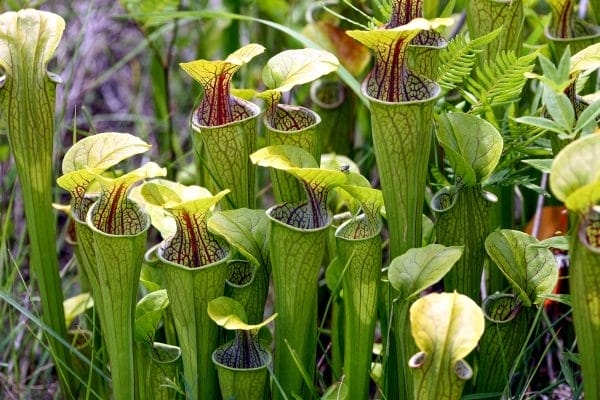 Green Pitcher Plant
Among the most notable of the flora in the canyon are two plants specific to northeast Alabama, the green pitcher plant (Sarracenia oreophila) and Kral’s water-plantain (Sagittaria secundifolia). The endangered pitcher plant is carnivorous, trapping insects in a tubular leaf containing digestive juices, and the aquatic Kral’s water-plantain is found only in Winston, Cherokee, and DeKalb counties. A wide variety of animals inhabits the canyon and its surrounding environment, including green salamanders and the endangered blue shiner fish.
Green Pitcher Plant
Among the most notable of the flora in the canyon are two plants specific to northeast Alabama, the green pitcher plant (Sarracenia oreophila) and Kral’s water-plantain (Sagittaria secundifolia). The endangered pitcher plant is carnivorous, trapping insects in a tubular leaf containing digestive juices, and the aquatic Kral’s water-plantain is found only in Winston, Cherokee, and DeKalb counties. A wide variety of animals inhabits the canyon and its surrounding environment, including green salamanders and the endangered blue shiner fish.
Jacksonville State University (JSU) runs a field school program adjacent to the preserve, a project of the university’s Environmental Policy and Information Center established to educate and help preserve the Little River Canyon and Lookout Mountain. The U.S. Congress approved funding for the JSU Canyon Center in February 2003, and in 2007 the facilities were built on the DeKalb-Cherokee county line. The interpretive center features an information desk, movie theater, gift shop, classroom space, and a rental space for meetings, and nature trails wind around the outdoor space. The federal General Services Administration leases space in the center that houses the offices of the National Park Service.
The Little River Canyon has seen development along its east rim. Whereas several small structures, such as hunting shacks, had been built without incident, in 2004 a 3,800-square-foot home was erected looking down over the canyon and complaints arose from park supporters and users that the preserve’s pristine quality had been diminished. Alabama senator Jeff Sessions has pressed to rework the preserve’s boundaries and to prevent additional development along its border.
